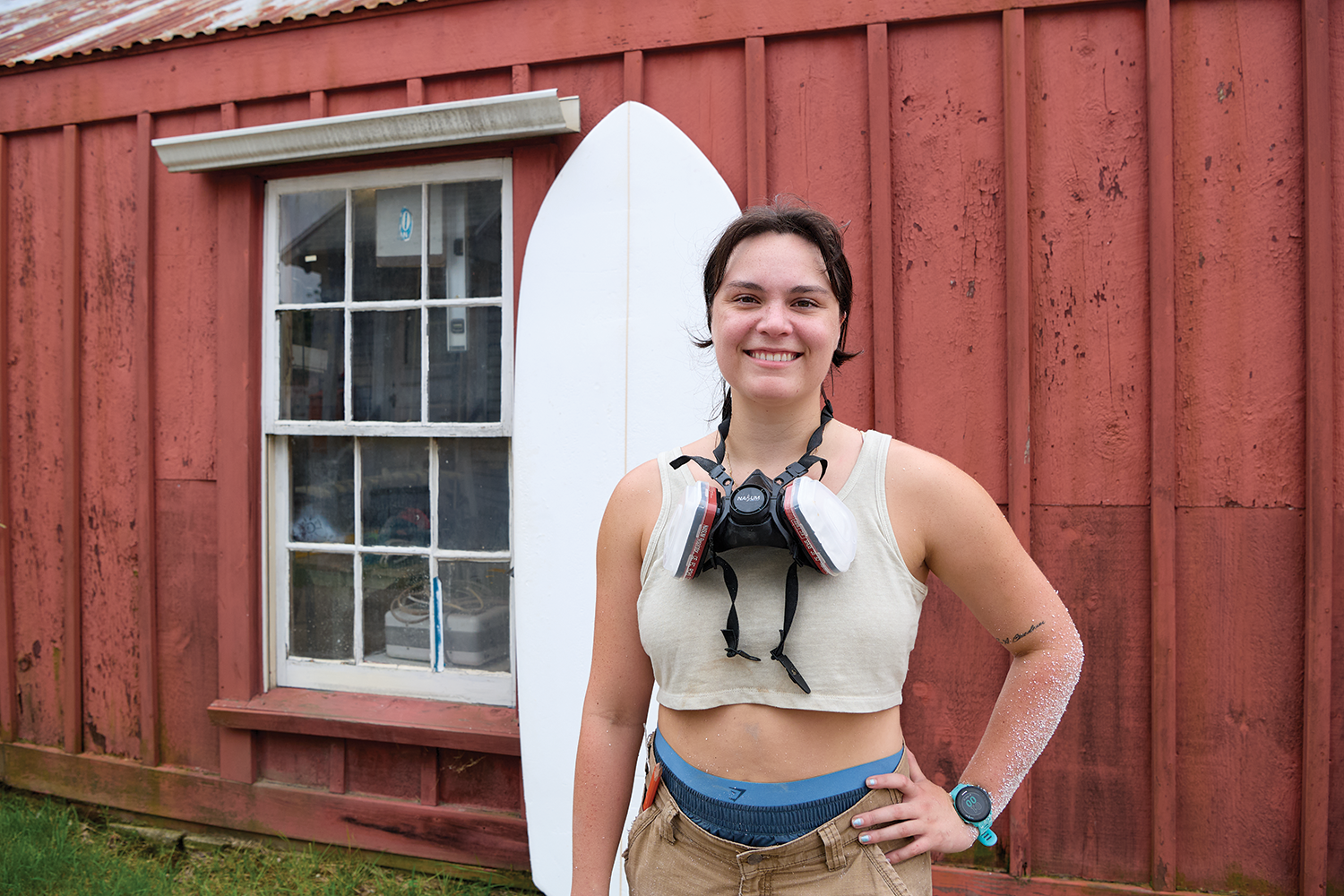An Edible Surfboard? Almost!

Martin this summer at a workshop at Mystic Seaport Museum that she uses to shape surfboards. She says she hopes to someday soon be using the space to shape prototypes.
Contemplating a Haiti beach utterly covered in trash was "traumatizing," says avid surfer Amelia Martin '23 (CAHNR). But she didn't want to clean it up.
"My first thought was — let me try to make a surfboard out of trash, because what if I could clean up the ocean and give a surfboard back to people?"
Martin started an independent study with her environmental sciences professor Morty Ortega to do just that, but she soon realized making a trash surfboard just wasn't a good idea. "You're melting plastic, which creates air pollution, and when the surfboard breaks, you'd just throw it away again and put it right back into the cycle."
While crafting boards in her garage to learn the process she found that most are 95% styrofoam, which takes 500 years to decompose, generating microplastics that enter the food chain. "At least 200,000 surfboards are thrown away every single year. There's got to be better material to make surfboards out of."
A UConn Co-Op Change Grant provided $2,000 seed money, and industrial arts professor Chris Sancomb became a mentor. "He said, 'Why don't you look into mycelium? Just use mushrooms.' Mycelium is the vegetative, root-like structure of a mushroom. We were growing them in my apartment." She tested, tweaked, made progress.
"Mycelium bonds to whatever substrate you're using. To make super squishy foam, you just use pure mycelium. If you grow it on sawdust and bake it, the end product is like a rock, where the mycelium is the glue and the structural support."
Martin's company Mud Rat is devising the "blanks" from which anyone can make an eco-friendly board. She's now getting support from the nonprofit Eco Board Project and is still working to find the perfect bio materials to use as substrate, 100% committed to a 100% biodegradable board and on track for a first prototype in 2025.
"My goal is to have a full-sized prototype," she says. "We're still about two years from that."
By Peter Nelson
Photo by Peter Morenus

Leave a Reply